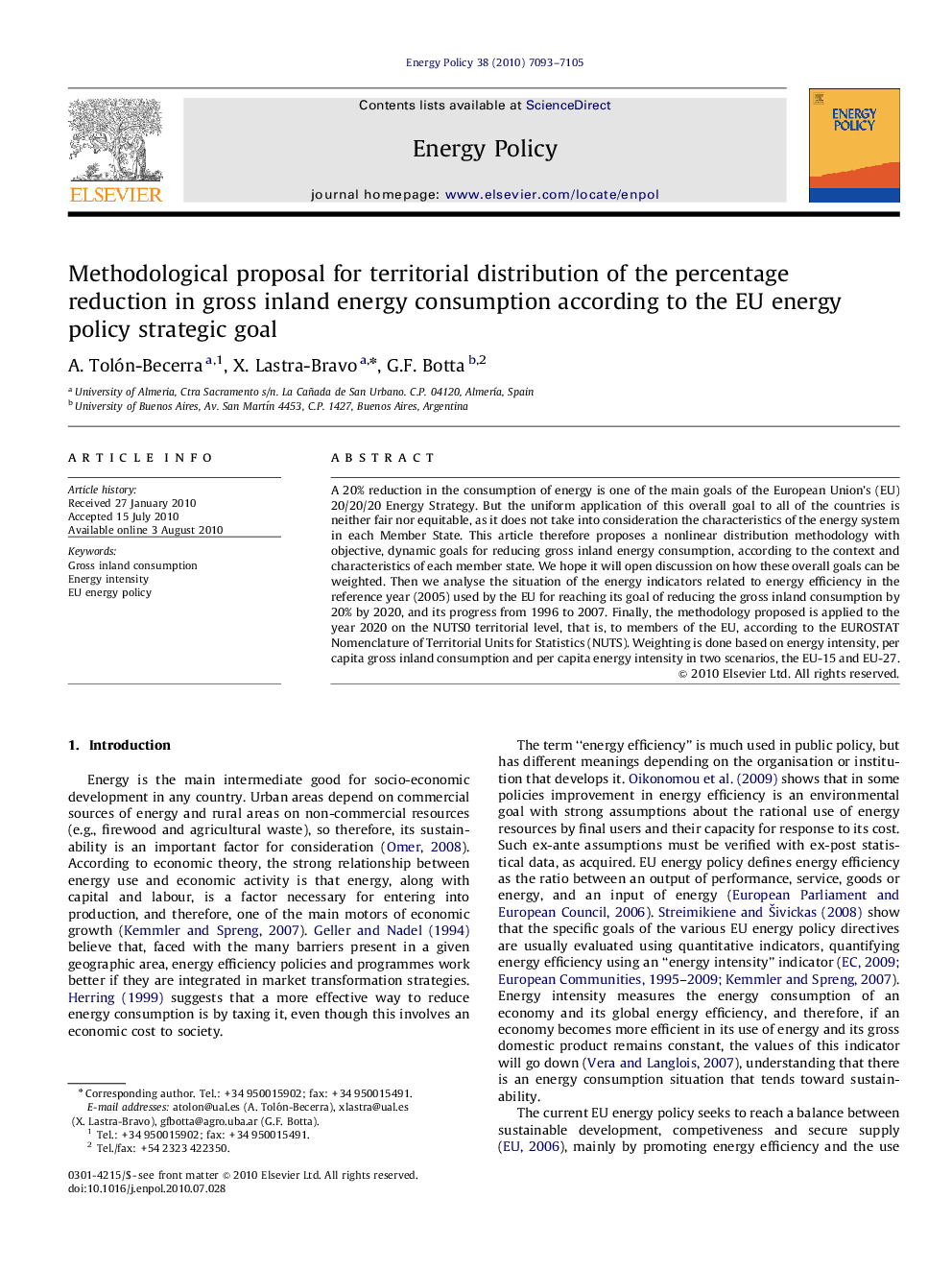| Article ID | Journal | Published Year | Pages | File Type |
|---|---|---|---|---|
| 996287 | Energy Policy | 2010 | 13 Pages |
A 20% reduction in the consumption of energy is one of the main goals of the European Union’s (EU) 20/20/20 Energy Strategy. But the uniform application of this overall goal to all of the countries is neither fair nor equitable, as it does not take into consideration the characteristics of the energy system in each Member State. This article therefore proposes a nonlinear distribution methodology with objective, dynamic goals for reducing gross inland energy consumption, according to the context and characteristics of each member state. We hope it will open discussion on how these overall goals can be weighted. Then we analyse the situation of the energy indicators related to energy efficiency in the reference year (2005) used by the EU for reaching its goal of reducing the gross inland consumption by 20% by 2020, and its progress from 1996 to 2007. Finally, the methodology proposed is applied to the year 2020 on the NUTS0 territorial level, that is, to members of the EU, according to the EUROSTAT Nomenclature of Territorial Units for Statistics (NUTS). Weighting is done based on energy intensity, per capita gross inland consumption and per capita energy intensity in two scenarios, the EU-15 and EU-27.
